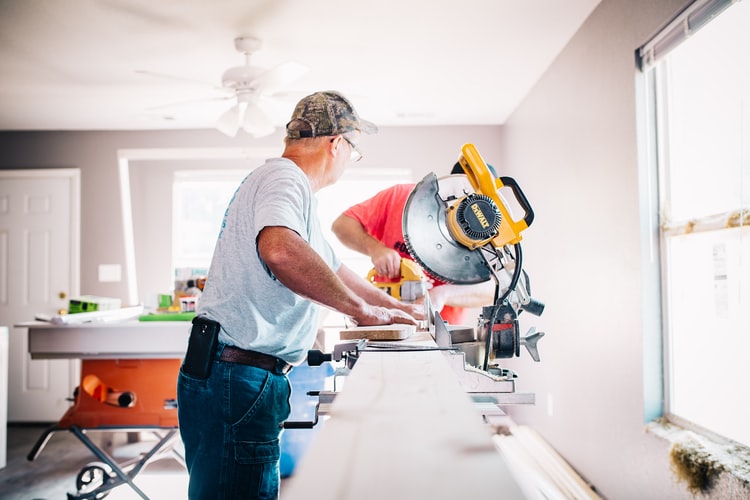Description
 Flipping houses is one the effective strategies in real estate investing
Flipping houses is one the effective strategies in real estate investing
Fixing is an art of creating something new.
You may be an expert in fix-and-flip, a beginner of this strategy, or a person having a working idea about it. Revisiting the basics of flipping houses is helpful to investors, regardless of the degree of experience. For beginners, it is good to have a foundation of things you should know. For experts, going back to the basics is a refreshing lesson. Sometimes, we overthink strategies that we forget the value of the fundamentals.
House flipping in a nutshell
Fix-and-flip is the method of purchasing a property, fixing it through renovations and repairs, then selling it for a more valuable price. Flipping houses is suitable in properties of range conditions, whether distressed or slightly used.
Quick Performance Evaluation
In March 2020, ATTOM data Solution released a report showing that home flipping rates increased in 64% of the local market. In 122 of the 190 metropolitan statistical areas analyzed, there is a rise in sales of home flips. The largest annual increases came in Laredo, TX which is up by 103.5%. In 2019, 56.2% of homes flipped were bought with all-cash based on national percentage. The data is up compared to 54.1 % in 2018.
The Basics
Here are the 3 fundamentals about house flipping that we should revisit:
No.1- Getting comparables (comps)
Multiple Listing Services or the MLS is the common way to get comps. Comparables is important in setting the property list price. When you set the price too high, it may remain inactive in the listings. When you set the price too low, you may lose the chance of getting a better return on investment (ROI). Hence, comps is necessary to set a competitive price list.
Setting a Detailed comparison
Getting the comps means you need to compare apples to apples. The subject properties you are comparing must have similarities in features and characteristics. The Property information that you must consider are the distance, recency of being listed, the property type, sold price, DOM Year built, square footage and price per square footage.
Making headway
The MLS database is available to other investors as well, making the competition even tougher. If you want to get ahead of the information, you may want to use the tools that can give you both advanced potential leads and off-market leads at the same time.
No. 2- Estimating repairs
The profitability of a property is the primary consideration in entering deals. House flippers must know how to estimate the repairs. The property may be sold at a low price, but there are many things for repair, which makes the rehab cost higher.
In estimating repairs, you need to compute for the After Repaired Value x 91%-92% minus the deductions (repairs and holding cost). You must consider the condition of the house such as the roof, foundation, structure, electricity, plumbing, HVAC and the operating expenses.
Do the math with automation tools
Computations must be done carefully. A concise computation can help you set the list price properly and to estimate your return on investment. On the other hand, an inaccurate computation can trickle down to other problems, such as false expectation of returns. Our repair estimator can help you do the math! Feel free to check it out on our investment tools.
No. 3- Analyzing deals
Deal analysis includes the skills of computing your maximum allowable offer. You must also set the details of your costs vis-a-vis your expectation of returns. A professional typically spends 20 to 30 minutes to complete property analysis. Deal analysis suite may help you to use live MLS Data and to quickly run your own CMA/comps.
The demand side
The US Department of Housing and Urban Development and the US Census Bureau report reveals that sales of family homes in the U.S rose to its highest level since 2008. The rate this June is 6.9% higher than the 2019 data despite the pandemic.
In house flipping, the ATTOM data solutions concluded that 53, 705 single-family homes and condominiums in the United States were flipped in the first quarter of 2020. The gross profit of home flipping in the first quarter reaches $62,300, which is higher as compared to the $62,000 in the fourth quarter of 2019. The NAHB is also seeing an increase of consumer demand in the rural areas.
Learn with us
Join our community where you can interact with real estate investors and stay on top of various passive investment opportunities. You may also read our investment blogs and learn about the hot trends in investing.
Credits:
Luke Watkins is a real estate investor with mastery of fix-and-flip and wholesale deals. His experiences include working with some of the biggest residential flipping companies in the country with a monthly average of closing 20 to 30 deals. He also has a background in construction and property management; and has invested in Salt Lake City, Utah, Indianapolis, Indiana, Albuquerque, New Mexico, and now Dallas, Texas
Sources:
Disclaimer: The blog articles are intended for educational and informational purposes only. Nothing in the content is intended as legal or financial advice.


